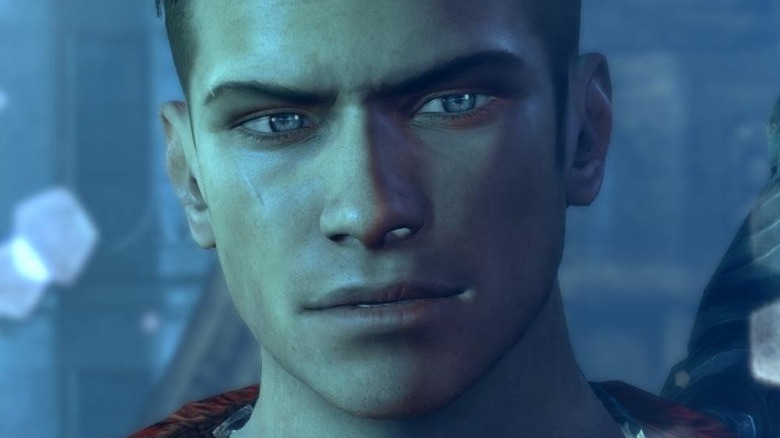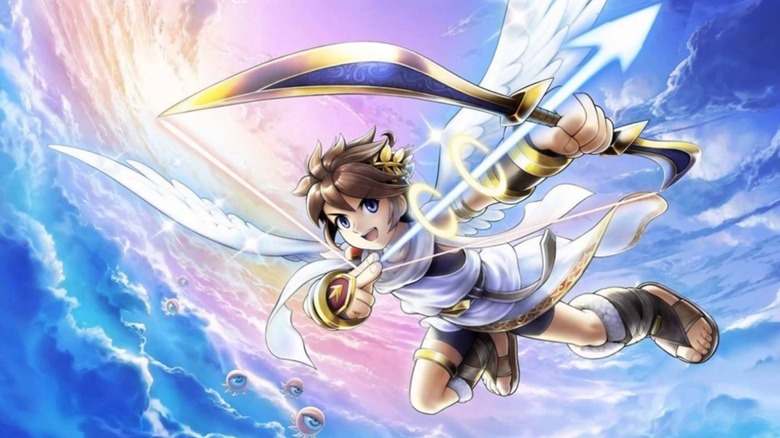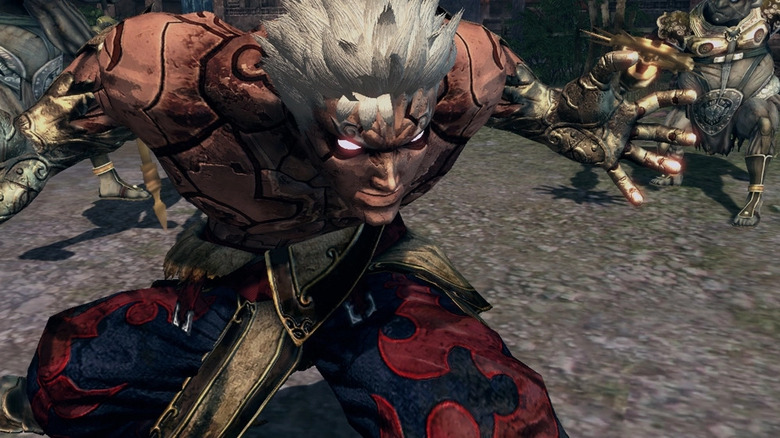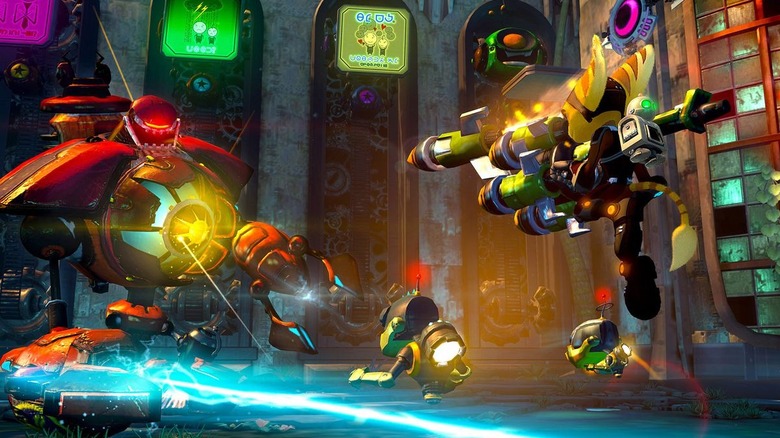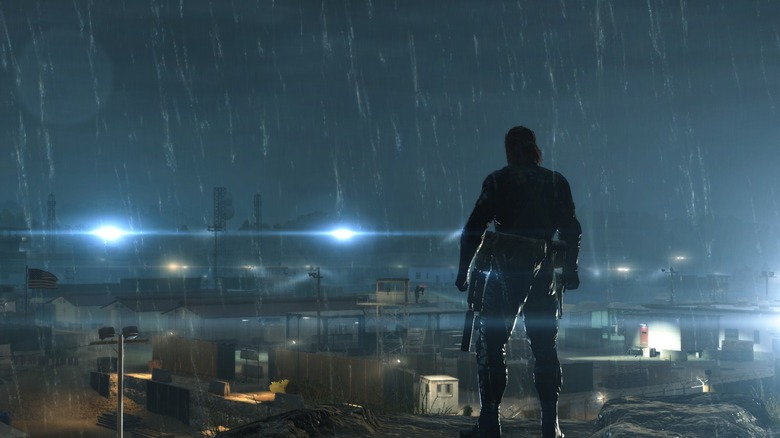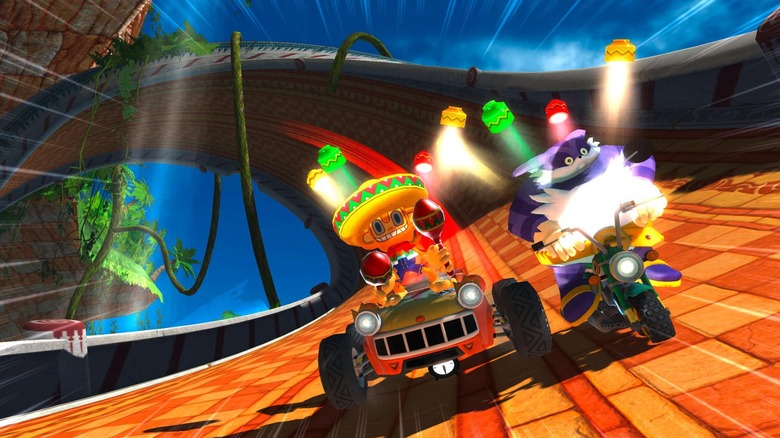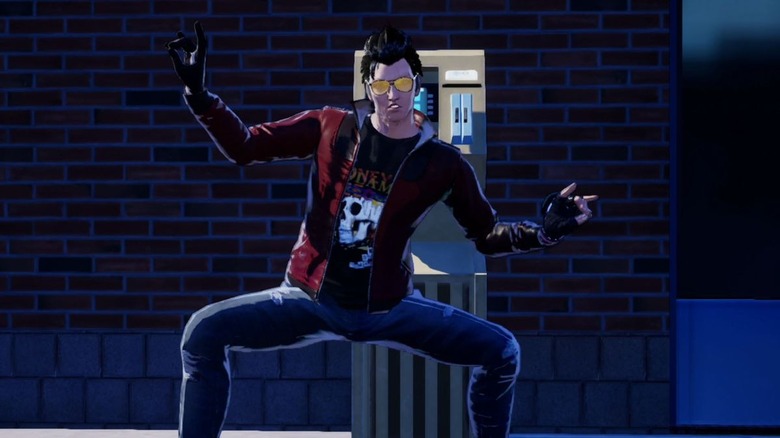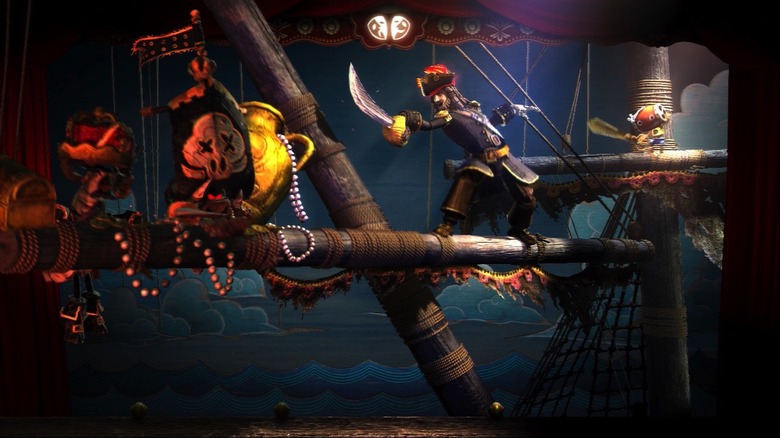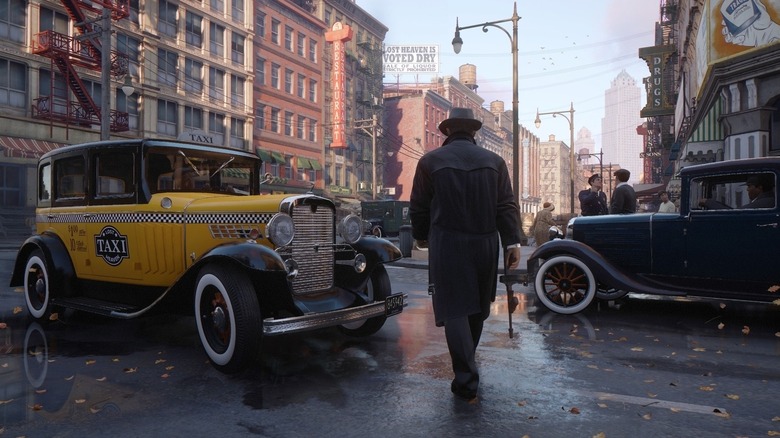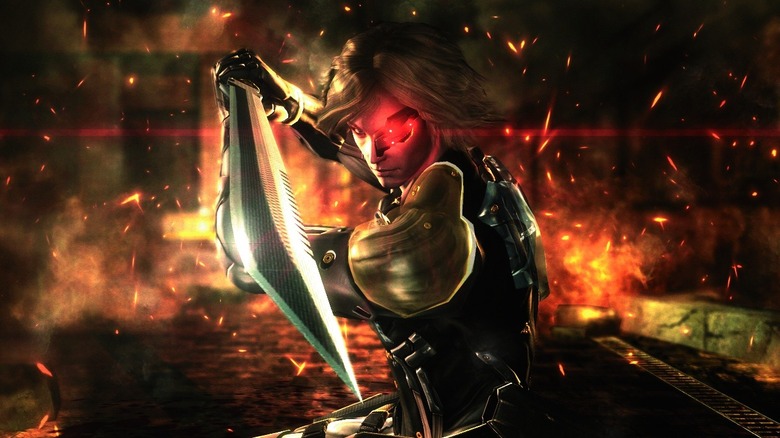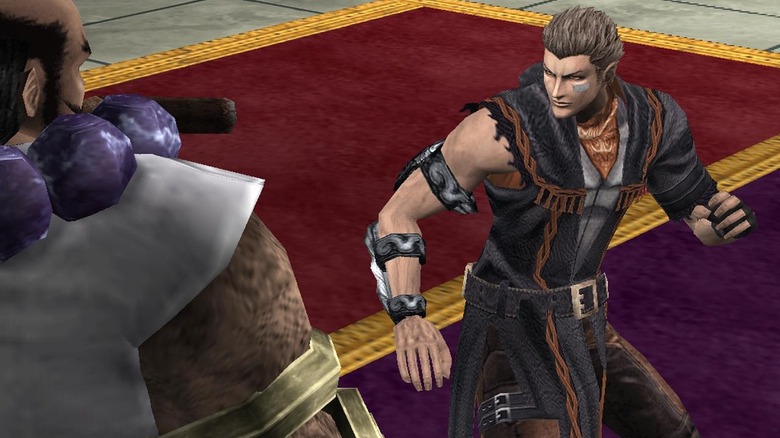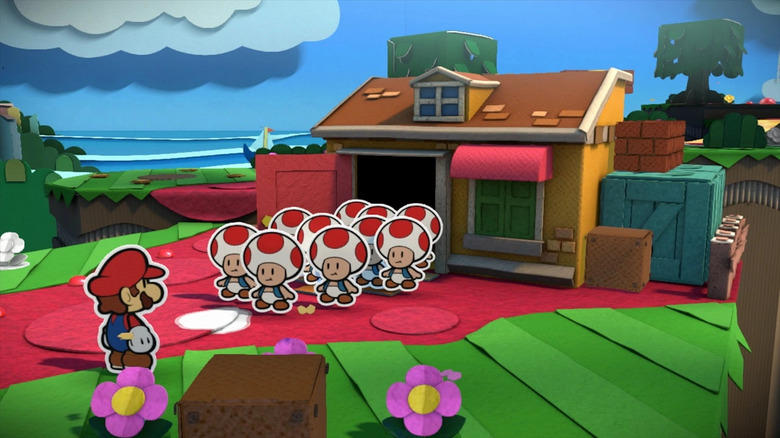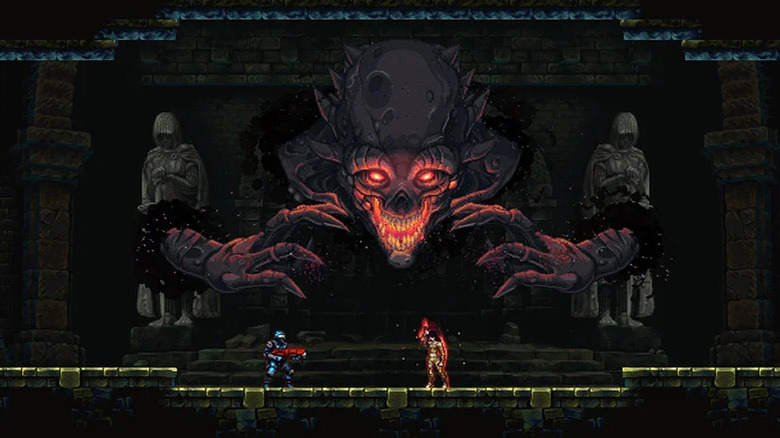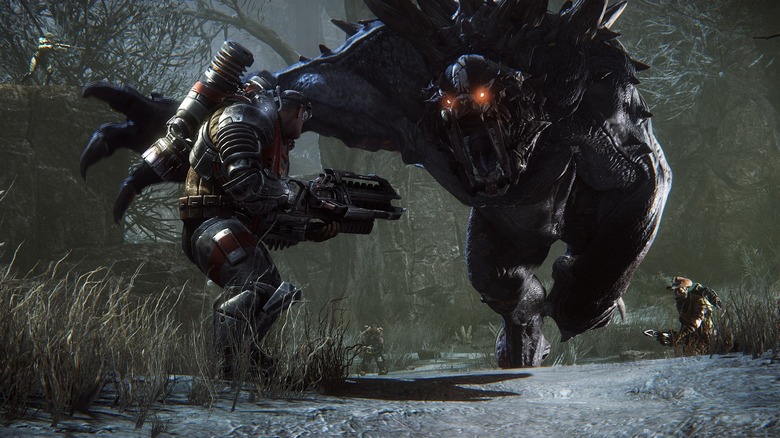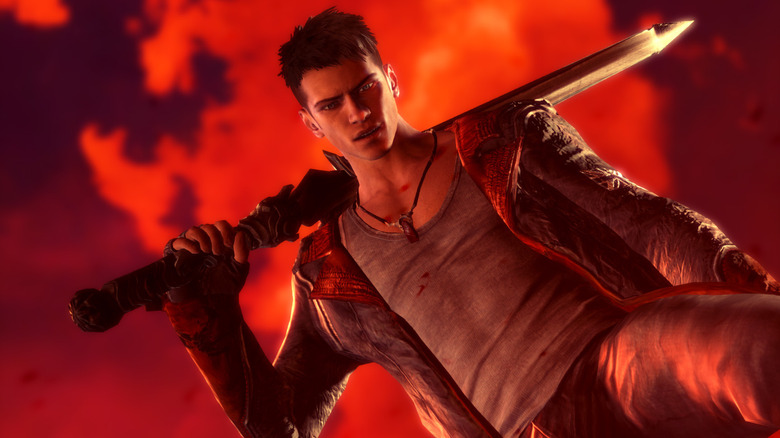Hidden Gaming Gems That Were Ruined By One Mistake
Video games have a lot to balance. Smooth performance, consistently fun gameplay, and a solid story are just three things that some games have to achieve simultaneously. With the amount of variables that comprise a gaming experience it's easy for imperfections to arise. Even some of the biggest blockbusters can be vulnerable to controversy.
For example, Bethesda's games are some of the industry's biggest projects, titles that can be in development for nearly a decade, and yet even those can fall victim to performance hiccups. Those are critically acclaimed titles that have a small handful of nitpicks, though. Some huge games turn out terribly and have few redeeming qualities, no matter how much work goes into them. But what about the games that go largely unnoticed and forgotten?
There are some hidden gems in the history of video games that just didn't sell well, no matter how well-reviewed they were. And sometimes you just find a game that's super close to being a home run, but there's just one glaring issue or two that hampers the final score. From grating voice acting to short runtimes, here are some of the issues that have plagued gaming's greatest treasures.
Kid Icarus: Uprising's controls were awkward
The "Kid Icarus" property laid dormant for 21 years until "Uprising" was released. The series' origins lie in classic 2D platforming, but the 3DS entry shook up Pit's adventures. A cross between third-person action and shoot 'em up gameplay, "Uprising" was the big budget face lift. What was a huge step back, however, was the presence of awkward controls.
"Kid Icarus: Uprising" features a ton of shooting, flying, and melee sequences — and all are done through the left trigger, left circle pad, and stylus, making all the actions feel crowded. Seemingly aware of the awkward control scheme, Nintendo released a "How To Play" video demonstrating it in action. Nintendo doubled down by packaging a 3DS stand accessory with the cartridge, ensuring a more comfortable gaming setup.
In its review, GameTrailers noted the game's cool mechanics are overshadowed by the controls. Still, "Uprising" is worth checking out for its music and voice acting, as well as its large catalogue of customizable weapons and powers that can be customized throughout the journey. The game is mostly a great time, as long as the weird controls can be overlooked. Here's hoping for an improved Switch port – fingers crossed!
Asura's Wrath felt more like a TV show
CyberConnect2 has been involved in countless anime-based games, from "Naruto" to "Demon Slayer," so a brand new IP developed by CyberConnect2 and published by Capcom might seem like an unlikely partnership. It ultimately resulted in a game that feels more like a movie at times.
A hack and slash romp, "Asura's Wrath" stars the titular demigod on his quest for revenge against the gods. Funny enough, the game's opening starts out with a shoot 'em up section similar to "Kid Icarus: Uprising," which then transitions to a series of quick-time events and traditional action fights. Asura's moves are simplistic as he wields blasts, melee moves, and some aerial attacks.
Where "Asura's Wrath" really shines is in its presentation and boss fights, but the cutscenes can become tiring. Some outlets have even criticized the game for its unbalanced cutscene-to-gameplay ratio (via Kotaku). Then again, some players might not mind when they see how cool some of these scenes really are.
Capcom and CyberConnect2's experiment sold very poorly at release, but it has attained cult status, and some fans fondly remember it as one of the most underrated games of recent years.
Ratchet & Clank: Into the Nexus got stuck on the PS3
Ratchet and Clank is one of the most consistent series in gaming. Sadly, many might have skipped the last PS3 entry, "Into the Nexus." Released during the launch period of the PS4, "Into the Nexus" was something of a final swan song for the PlayStation 3. Like "Ratchet & Clank: A Crack In Time," "Into the Nexus" implements wacky gravity mechanics, expanding on the feature with the ability to connect gravity points that move Ratchet from point A to point B. This is utilized during platforming and puzzle sections to switch up the typical running and blasting.
It's surprising what "Into the Nexus" accomplishes with its shockingly short length. It's a great deal of fun, but the campaign only clocks in at around five and a half hours for the main story. Just when the game gets going, it's already over!
Unfortunately, the game is not one of the better sellers in the series (per VGChartz). Trapped on the PS3 (unless players stream via PS Now), "Ratchet & Clank: Into the Nexus" doesn't do much to innovate on what came before it. Add an unfortunate release window and a short runtime, and it can be easy to forget how good the rest of the game really is.
Metal Gear Solid 5: Ground Zeroes just... wasn't a full game
Remember the opening to "Metal Gear Solid 2," with Snake embarking on the deadly tanker mission? The sequence acts as a prologue to the rest of the game and was originally released as an official demo that came with "Zone of the Enders." Well, imagine that level being sold as its own game, and you essentially know what "Ground Zeroes" is like. As a smaller $30 release, "Ground Zeroes" was basically an appetizer for what was to come in "The Phantom Pain."
Development for "Metal Gear Solid 5: The Phantom Pain" was becoming long and strenuous. Due to the delay and complications with "Metal Gear Rising: Revengeance," Konami and Hideo Kojima decided to quench fans' thirst by releasing the prologue as a standalone game (per Kotaku). What many players didn't know when they plunked down their money was that the main story mission could be finished in under an hour! The overall length pales in comparison to the series average of 10-15 hours and the gargantuan runtime of "The Phantom Pain."
Besides the core main story mission, there are five other side ops that vary in gameplay style. Each is incredibly replayable thanks to rankings, collectibles, and easter eggs, but the surprisingly short length tends to turn people off from checking it out.
Sonic & Sega All-Stars Racing feels familiar
Once "Mario Kart" was released, every gaming property came running to copy the kart racer, including Nickelodeon, Crash Bandicoot, Garfield, and more. Out of these, Crash arguably came the closest to achieving greatness with "Crash Team Racing." Sonic the Hedgehog had a rocky start with racing, primarily due to flawed releases like "Sonic R" and "Sonic Riders." 2010's "Sonic & Sega All Stars Racing" is one of the good "Mario Kart" clones, but its closeness to the plumber-led series is hard to overlook.
This Sonic racer is bursting with content. Characters from "Shenmue," "Crazy Taxi," and "Monkeyball" all join the fray in this crossover. Not only that, but the tracks themselves are diverse, including everything from "Sonic's Casino Park" to Curien Mansion from "House of the Dead." There are references to game franchises big and small.
The only real drawback is the game's lack of originality. In its review, Game Informer listed a lot of positives for the game, but remarked that it still feels like a "straightforward 'Mario Kart' clone with a glossy Sega veneer," right down to similar items that can be used during races. It's kind of a shame, because the whole package is fantastic. Luckily the sequel, "Racing Transformed" was able to mostly resolve the copycat issue years later.
No More Heroes 3 brought back unpopular elements
"No More Heroes 3" is sort of geared toward those who are already in the know about the series. Its obscure references, whacky characters, and insane dialogue make for a classic "love it or hate it" situation. Because of this, the series has had trouble captivating a wider audience. And yet, as noted by Nintendo Life, it frequently doubles down on things aimed towards making the fans happy.
The "No More Heroes" series is a potent mix of mini-games with hack and slash combat, balancing the two as players take on smaller challenges to get quick cash and move along to the next battle. A large issue in the first "No More Heroes" was its open world, unfortunately. It was hollow, and kind of unnecessary. The sequel did away with this tedious extra space altogether, which earned the praise of reviewers like Lark Anderson for CNET.
For some reason, creator Suda 51 thought to bring back something that hadn't worked in the past. The world of Santa Destroy is pretty lifeless and bland, doing little to bolster an already solid adventure. Even the performance takes a hit here! As noted by outlets such as Digital Foundry, combat reaches around 60 frames per second, but the open world section suffers from lower resolution and frame rate.
Puppeteer features some truly annoying characters
One of the last hidden gems in the PS3's life cycle, "Puppeteer" is an extremely solid platformer with a unique sense of style. "Puppeteer" is presented as a stage play, complete with characters and environments designed to emulate dioramas and, yes, puppets! Developed by Japan Studio, "Puppeteer" opts for a more arts and crafts look reminiscent of "Little Big Planet," "Yoshi's Wooly World," and "Tearaway," which IGN noted makes for a very engaging and immersive time from start to finish.
What "Puppeteer" doesn't quite nail, however, is the voice acting. Destructoid complimented the music, but quickly mentioned after how the voice work could be grating. Push Square echoed that stance, claiming that some characters will "drive players insane." Though it's seemingly a small issue, voice acting is basically at the forefront of this game full of lengthy cutscenes, not to mention the whole stage play motif at work.
"Puppeteer" is filled with whimsy, which can be hard to find in modern games. And although the voice acting is a point of debate, this PlayStation 3 exclusive deserved a bit more time in the spotlight.
Mafia: Definitive Edition suffers from performance issues
"Mafia" is an undeniable modern classic, which spawned a solid sequel in "Mafia 2" and the even larger "Mafia 3." Making the experience more digestible for newcomers is "Mafia: Definitive Edition."
Remakes are a complex thing in video games, as some ports and remasters only come with a few small adjustments to justify the "remake" designation. "Mafia: Definitive Edition" puts those criticisms to rest with what it accomplishes. An overhauled script, better graphics, and altered voice work combine to make arguably the best game in the series, while the Classic mode preserves the original game's mechanics for nostalgic fans.
Unfortunately, as noted by reviews from publications like Eurogamer, performance issues drag down the experience. There is noticeable screen tearing during cutscenes, while action tends to stutter on all platforms, even PC. There are ways to mitigate these issues on PC, depending on the player's specs, but console players will have to suck it up. Without these issues, "Mafia: Definitive Edition" is an engrossing gangster tale that is well-worth the price of admission.
Metal Gear Rising: Revengeance is a short serving of revenge
Back in 2013, Konami and Platinum Games partnered up for a new type of "Metal Gear." Again playing as "Metal Gear Solid 2" protagonist Raiden, players must slash their way in a more action-oriented game. And while it's one of the most intense "Metal Gear" titles, it's also one of the shortest. Less like a "Metal Gear" and more like "Bayonetta" sequel in military garb, Raiden can cut through cyborgs in slow motion and rip their spines out (per GameSpot). Yeah, it's wild.
Raiden's second outing as the main character is a fun time full of weird characters and future-predicting villains, but its short runtime kills it for many players. The linear storyline ends up being about seven hours total, which is roughly half the playthrough time of most "Metal Gear Solid" games, but is pretty much in line with Platinum Games' "Vanquish," which likewise only cracks 6 hours.
Compensating for this issue, "Revengeance" is all killer, no filler, packed to gills with glorious action. The game has slowly been revived through fan memes (as noted by Game Rant) and is now seen by many as an overlooked gem in the beloved spy franchise.
God Hand can be hard to see
Shinji Mikami's underdog action title has become a bit of a cult classic, but there are a few things that hold it back from greatness. Capcom's beat 'em up executes combat very differently from other over the top action games. For starters, some moves are mapped to the right stick, which is disorienting because many other games free up the stick for camera control. It makes sense, though, because the frantic action in "God Hand" ensures that players will need as many buttons as possible for fighting.
The negative is that the camera system is unwieldy as a result. Many brawls take place in interiors and cornered spaces, where an intuitive camera is a necessity. Even some enemies can be hard to see coming (per Eurogamer). Camera issues aside, "God Hand" is an addicting and difficult time. It's so gratifying to purchase new moves and find the right combo to use at the right time. Critics may not have loved it at the time, but fans have come to view "God Hand" as one of the best PS2 games. You've just got to get past that incredibly frustrating camera.
Paper Mario: Color Splash didn't have the most glamorous release
The first "Paper Mario" was an innovative adaptation for the Italian Plumber, not to mention one of the Nintendo 64's best games. It's storytelling, world-building, and turn-based combat all gradually got better with the arrival of "The Thousand Year Door," then lost its footing just a bit with "Paper Mario: Sticker Star." 2016's "Paper Mario: Color Splash" was a small step in the right direction — and also small step back.
Revealed abruptly during a Nintendo Direct, the announcement of "Color Splash" was a bit surreal, leaving fans such as Arlo confused. Rather than a trailer, Nintendo representative Bill Trinen quickly transitioned to talking about the brand new "Paper Mario" title casually. Coming out less than a year before the Nintendo Switch launch, "Color Splash" flew under the radar on the Wii U, a console that was already a big flop.
"Color Splash" has some gimmicks that help right previous issues, like having Mario restore the world by filling in gaps of color. Exploration was a stronger focus, but the battle mechanics were lacking (per Nintendo Life). Every "Paper Mario" game is beloved, but the underwhelming promotional strategy and card battle system definitely held this one back from true greatness.
The Mummy Demastered was tied to the wrong IP
Many games have kept the Metroidvania genre strong in recent years, including releases such as "Hollow Knight," "Bloodstained," and "Blasphemous." But! What if there was a Metroidvania that was tied to the failed Tom Cruise movie, "The Mummy?" Not interested?
Well, it's real — and it's shockingly great. "The Mummy Demastered" serves as a sprite-based prequel to Universal's monster movie flop, and as noted by Metro, it really has no right to be so good. Taking cues from "Souls" games and roguelikes, "Demastered" combines elements from a number of successful titles into its own gameplay. For instance, after dying, the player's corpse is "reanimated" and must be defeated in order to obtain previously acquired equipment.
With Wayforward developing "The Mummy Demastered" — the group behind the beloved "Shantae" games — it's no wonder this title stood out among other tie-in games. In hindsight it's pretty clear that this developer might create a stellar game. Still the lingering question remains: Why "The Mummy?"
Joining the slim ranks of games that were better than the movie is "The Mummy Demastered." It's just a bummer to think that this great game was overlooked by many because it was attached to a box office bomb.
Evolve was unbalanced
Multiplayer games like "Dead by Daylight" and "Destiny 2" have maintained their popularity over the years due to a near-constant influx of new content and refined gameplay. Sadly, the same can't be said of "Evolve." The 2015 co-op shooter won numerous E3 awards and was highly anticipated, only to lose much of its steam and lose almost all of its playerbase shortly after launch.
The issues with "Evolve" boil down to its repetitive framework. The 4v1 dynamic was an exciting proposition, but quickly became dull due to balance issues that plagued the game from the beginning. In an interview with PC Gamer, game designer Matt Colville explained that every new hero and monster would essentially break the game, which made implementing new ideas basically impossible. This issue only got worse when gamers began to find numerous exploits and broke the game themselves.
"Evolve" just didn't work. The repetitive shooter grew more and more vulnerable as players became disgruntled with the mounting cost of the base game and DLC packs (as noted by GamingBolt). "Evolve" some cool ideas working in its favor, and it was a lot of fun right out of the gate, but even its fresh ideas have since been mastered by other developers and publishers.
DmC: Devil May Cry wasn't as cool as it thought it was
Ever since "DmC" was announced, it has been closely tied to fan uproar in its attempt at rebooting the series — an uproar that largely overshadowed how good of a game "DmC" truly was and is. Surprisingly, a lot of what players love about the main series is retained in "DmC," but to put it simply: this new version of Dante caused controversy. Compared to the goofy and lovable classic version of the series protagonist, this Dante smoked, cursed constantly, and felt largely like a try-hard attempt at being cool.
Having said that, it's pretty nonsensical to dismiss the rest of "DmC," because every other part of the game is a blast! Since he is part angel and part demon this time around, Ninja Theory incorporated Dante's background into the moveset. With the press of the button, Dante's weapons change to reflect his demonic or angelic side. However, it has been almost impossible for even longtime franchise fans to get past the dark tone and juvenile antics of Ninja Theory's Dante. This definitely wasn't helped by Ninja Theory's insistence that the "new" Dante was much cooler than the original (per Destructoid).
Though "Devil May Cry 5" has returned the franchise to its former glory, it's unfortunate how "DmC" was treated, since there's a lot of fun to be had with it.

